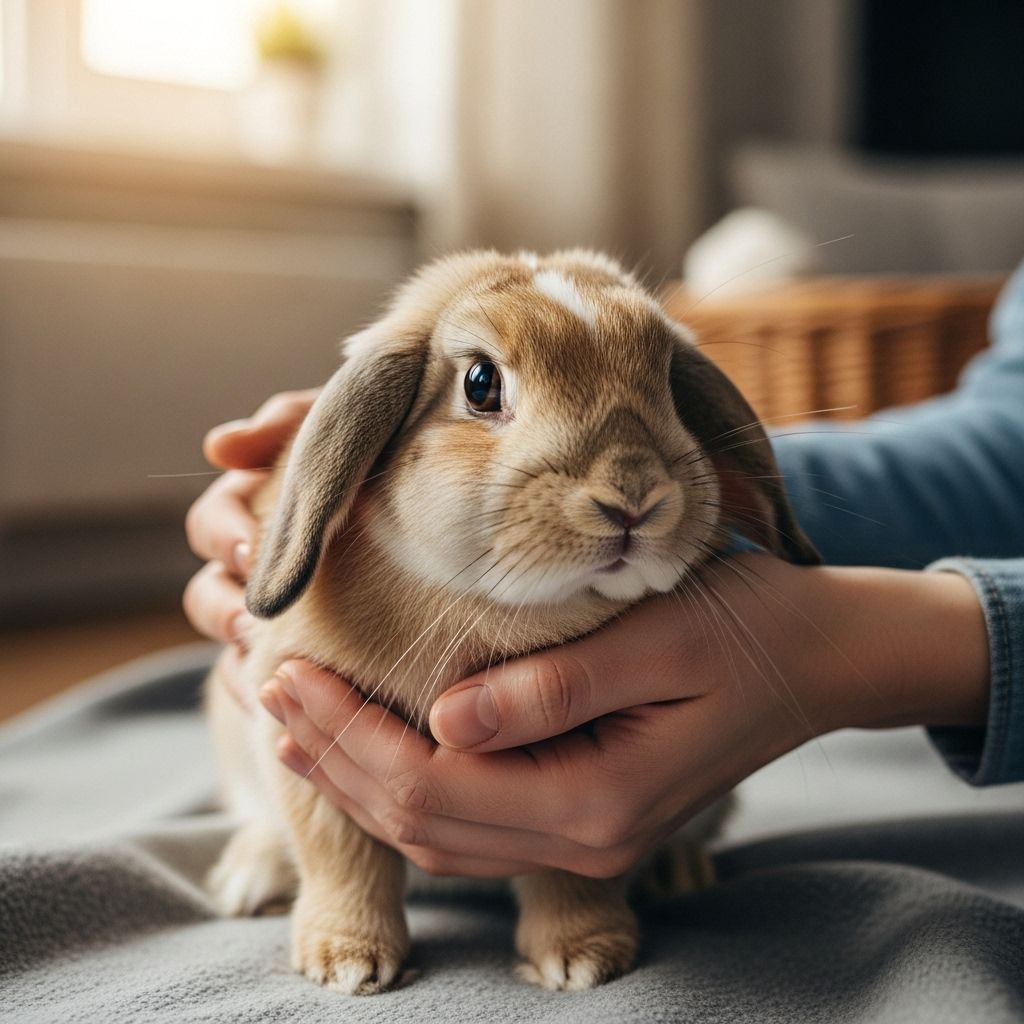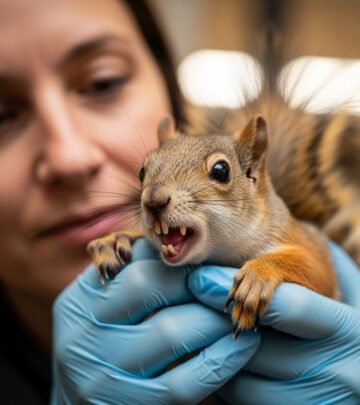How To Rehome A Rabbit: Comprehensive Step-By-Step Guide
Ensure your bunny finds a safe, caring environment with these expert rehoming tips

Image: HearthJunction Design Team
Finding a Loving New Home For Your Rabbit
Making the difficult decision to rehome your rabbit is never easy. Whether due to changing life circumstances, housing restrictions, or other unforeseen situations, finding yourself unable to continue caring for your bunny companion can be heartbreaking. However, when rehoming becomes necessary, taking the right steps can ensure your rabbit transitions to a safe, loving environment. This comprehensive guide will walk you through the process of responsibly finding a new home for your rabbit.
Understanding the Rehoming Process
Before beginning the search for a new home, it’s important to understand what makes for a successful rehoming. The goal isn’t just to find any home but to find the right home—one where your rabbit will receive proper care, attention, and affection. This process takes time and careful consideration.
Rabbits can live 8-12 years when properly cared for, making this a long-term commitment for the new owner. The ideal adopter should understand rabbit care requirements and be prepared for this responsibility. Rushing the process or choosing the first available option often leads to poor outcomes, with rabbits potentially facing multiple rehoming situations or worse.
Preparing Your Rabbit for Adoption
Socialization and Training
A well-socialized, well-behaved rabbit has a much better chance of finding and keeping a good home. Before rehoming your rabbit, invest time in:
- Litterbox training your rabbit to make them more appealing to potential adopters
- Socializing them with gentle handling to ensure they’re comfortable with human interaction
- Working on any behavioral issues that might make adoption more challenging
If your rabbit has experienced trauma or abuse in the past, they may require extra patience and gentle care to rebuild trust with humans. Taking the time to help your rabbit become more social and friendly will significantly improve their chances of finding a permanent, loving home.
Medical Preparation
Ensuring your rabbit is in good health before rehoming is essential. Consider these medical preparations:
- Schedule a veterinary check-up to assess your rabbit’s overall health
- Have your rabbit spayed or neutered if they aren’t already
- Compile medical records to provide to the new owner
- Ensure vaccinations are current
Spayed or neutered rabbits are generally healthier, better behaved, and more appealing to potential adopters. While the procedure represents an upfront cost, it can make the rehoming process much smoother and more successful.
Creating Effective Adoption Materials
Developing an Adoption Profile
An informative, appealing adoption profile can make a significant difference in attracting the right adopters. Create a comprehensive flyer or online posting that includes:
- Clear, high-quality photos showing your rabbit’s appearance and personality
- A detailed physical description including breed (if known), size, color, and distinctive markings
- Personality traits that make your rabbit unique
- Information about training, such as litterbox habits
- Medical history, including whether they’re spayed/neutered
- Special needs, dietary preferences, or behavioral considerations
- The reason for rehoming (be honest but positive)
Always specify an adoption fee in your materials. This isn’t just about recouping costs—it’s a crucial safety measure. Charging a minimum of $20.00 (or more for spayed/neutered rabbits) helps screen out individuals who might have harmful intentions. Someone unwilling to pay a modest adoption fee for a socialized, possibly altered rabbit may also be unwilling to invest in proper veterinary care.
Where to Promote Your Rabbit
Strategic placement of your adoption materials can help reach potential adopters who are likely to provide good homes:
- Veterinary offices, especially exotic animal veterinarians who treat rabbits
- Pet supply stores (with permission)
- Community bulletin boards in animal-friendly establishments
- Social media groups dedicated to rabbit care or pet adoption
- Responsible rehoming websites and services
Connect with local rabbit rescue groups and animal shelters—they may be able to help with the rehoming process or share your rabbit’s information with their networks of qualified adopters. Many maintain waiting lists of pre-screened individuals looking for rabbits.
Avoiding Dangerous Rehoming Situations
Unfortunately, not everyone seeking free or low-cost animals has good intentions. Be aware of these potential dangers when rehoming your rabbit:
The Dangers of “Free to Good Home” Listings
Never advertise your rabbit as “free to a good home.” This approach can attract individuals looking for:
- Animals to use as food for snakes or other predators
- Bait animals for training fighting dogs
- Subjects for experimentation or research
- Quick resale for profit
Always charge an adoption fee and thoroughly screen potential adopters to protect your rabbit from these dangerous situations. Remember that a responsible adopter will understand the importance of these precautions.
Red Flags When Screening Adopters
Be vigilant for warning signs that might indicate a potential adopter isn’t suitable:
- Reluctance to answer questions about their experience or living situation
- Unwillingness to allow a home visit or video tour of where the rabbit will live
- Vague responses about care plans or who will be responsible for the rabbit
- Excessive interest in breeding or whether the rabbit is altered
- Attempting to negotiate the adoption fee down or eliminate it
- Wanting to pick up the rabbit immediately without proper preparation
Trust your instincts. If something feels wrong about a potential adopter, it’s better to wait for a more suitable match than to place your rabbit in a potentially harmful situation.
Screening Potential Adopters
Finding the right match for your rabbit involves careful evaluation of potential adopters. Develop a thorough screening process that includes:
The Application Process
Create an adoption application that helps you assess whether a potential adopter can provide appropriate care. Include questions about:
- Previous experience with rabbits or other pets
- Knowledge of rabbit care basics
- Living situation (own/rent, house/apartment) and any pet restrictions
- Presence of other pets or young children in the home
- Time availability for rabbit care and interaction
- Plans for veterinary care and willingness to handle potential medical expenses
- Where the rabbit will be housed and exercised
Review applications carefully and follow up with potential adopters who seem promising. Don’t hesitate to ask for clarification or additional information if needed.
Conducting Home Checks
When possible, arrange to visit the potential adopter’s home before finalizing the adoption. This allows you to:
- Verify that the living environment is safe and suitable for a rabbit
- Ensure the potential adopter has appropriate housing and supplies
- Assess potential hazards or concerns (unsafe electrical cords, toxic plants, etc.)
- Observe interactions between household members and any existing pets
If an in-person visit isn’t feasible, consider requesting a video call tour of the home to get a sense of the environment where your rabbit would live.
Making the Transition
Once you’ve found the right adopter, help ensure a smooth transition for your rabbit:
Preparing an Information Packet
Compile essential information for the new owner, including:
- Detailed care instructions specific to your rabbit
- Diet information, including favorite foods and treats
- Medical records and veterinary contact information
- Behavior notes, including litterbox habits and preferences
- Toys, enrichment activities, and handling techniques your rabbit enjoys
Consider including a small supply of your rabbit’s current food to help with the transition and prevent digestive upset from an abrupt diet change.
Follow-Up Support
Offer ongoing support to the new owner, especially during the initial adjustment period:
- Make yourself available to answer questions or provide advice
- Check in periodically to see how the rabbit is adapting
- Offer to take the rabbit back if the adoption doesn’t work out
A willingness to provide continued support demonstrates your commitment to your rabbit’s welfare and can help ensure a successful placement.
Alternative Options
If finding a direct adoption match proves difficult, consider these alternatives:
Working with Rescue Organizations
Many rabbit rescue organizations can assist with rehoming:
- Some may accept your rabbit into their program if space is available
- Others might offer courtesy listings on their websites or social media
- Some provide guidance on proper rehoming procedures
Research rabbit rescues in your area and reach out to discuss your situation. Even if they cannot take your rabbit directly, they may offer valuable resources or connections.
Temporary Fostering Options
If your need to rehome is temporary (due to housing transitions, temporary relocation, etc.), consider:
- Finding a responsible foster home until you can reclaim your rabbit
- Arranging boarding at a rabbit-savvy veterinary facility or pet sitter
- Working with a rescue organization that offers temporary foster programs
These options can provide a safe solution without permanent separation from your rabbit.
Frequently Asked Questions
Q: How long does the rehoming process typically take?
A: Finding the right home for a rabbit can take anywhere from a few weeks to several months. The timeline depends on factors like your rabbit’s age, health, behavior, and the availability of suitable adopters in your area. It’s important not to rush the process—finding the right match is more important than finding a quick placement.
Q: Should I charge an adoption fee for my rabbit?
A: Yes, charging an adoption fee (minimum $20, more for spayed/neutered rabbits) is strongly recommended as a screening tool to ensure the adopter is serious about providing proper care. This also helps protect rabbits from individuals seeking free animals for harmful purposes.
Q: What supplies should I send with my rabbit to the new home?
A: Ideally, provide the new owner with your rabbit’s current housing, litterbox, food and water dishes, toys, and a small supply of their regular food and hay. Familiar items can help ease the transition stress for your rabbit and give the new owner time to learn what works best.
Q: How can I tell if a potential adopter will provide proper care?
A: Look for potential adopters who ask thoughtful questions about your rabbit’s care, show knowledge of rabbit needs, have researched rabbit care, are willing to invest in proper housing and veterinary care, and have a suitable living situation. Their willingness to go through a thorough screening process is also a positive indicator.
Remember that finding the right home for your rabbit is one of the most important gifts you can give them. By taking the time to properly prepare, screen potential adopters, and support the transition, you’re helping ensure your rabbit will live a happy, healthy life in their new home.
References
- https://www.petfinder.com/adopt-or-get-involved/adopting-pets/rehoming/finding-a-home-for-rabbits/
- https://www.petfinder.com/member/us/in/indianapolis/indiana-house-rabbit-society-in57/
- https://www.indianahrs.org/rabbit-care/unwanted-rabbits.aspx
- https://www.petfinder.com/adopt-or-get-involved/adopting-pets/rehoming/how-to-rehome-your-dog/
- https://www.petfinder.com/other-pets/rabbits/rabbits-basic-needs/
Read full bio of medha deb












